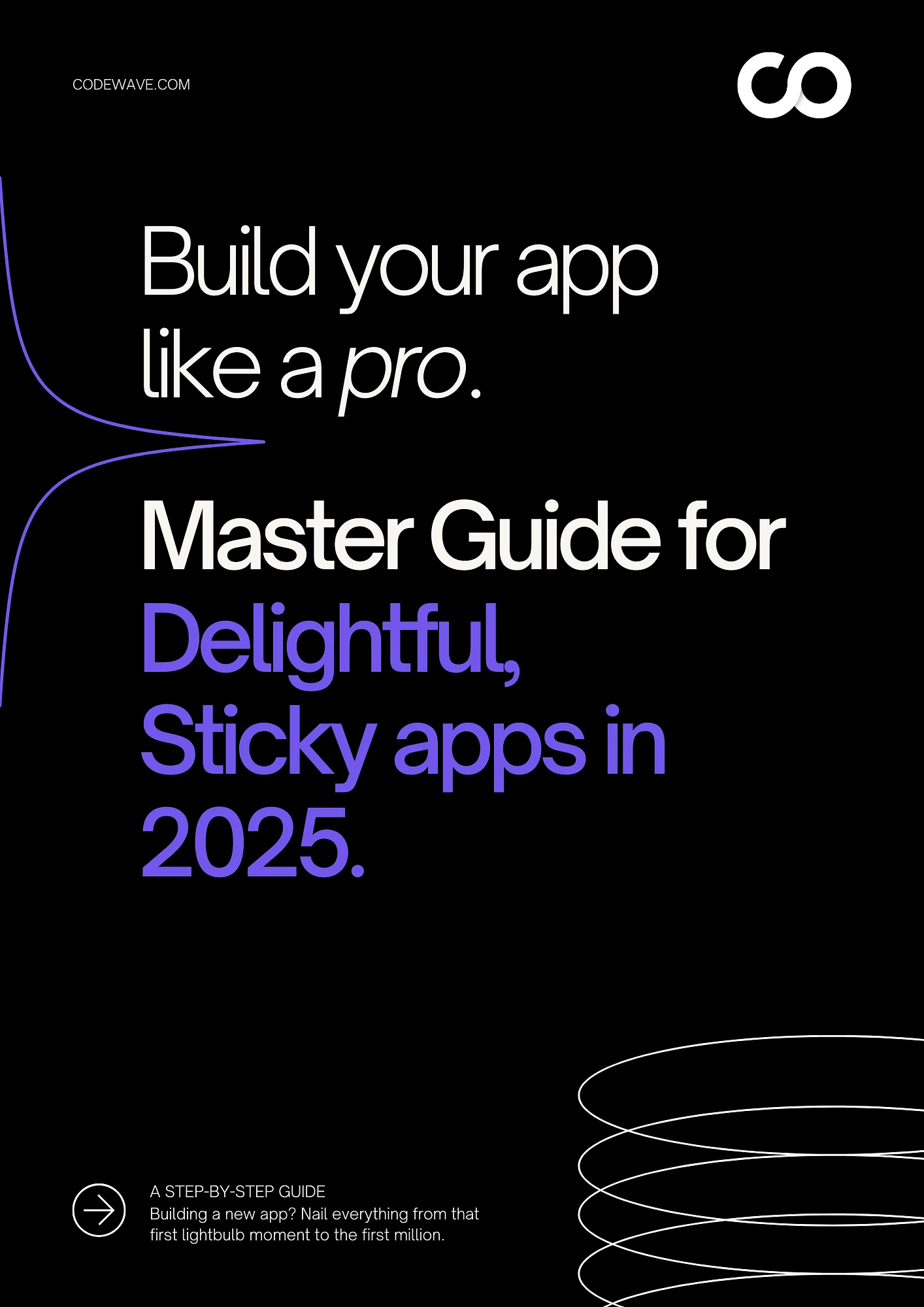You’re under pressure to release software fast, but manual testing is slowing you down. Bugs are slipping through the cracks, and the clock is ticking. What if you could cut down testing time, catch more issues, and still meet deadlines?
AI tools are here to make that happen. In 2024, they’re not just automating tests—they’re learning from them, improving accuracy, and speeding up the entire process. If you want to see how AI can boost your QA game, this blog breaks down the best tools you should know about and how they can give your team a serious edge.
10 AI Tools for Software QA Testing in 2024
Manual testing can be a bottleneck, but with AI tools, you can automate and accelerate the process, catching issues before they reach production. These tools not only speed up testing but also adapt to changes in your software, ensuring your tests are always relevant.
Here’s a quick overview of the top AI tools that are transforming QA testing in 2024.
1. Testim
Testim is an AI-driven test automation tool designed to help development and QA teams scale their testing efforts without sacrificing accuracy or speed. It uses machine learning to automatically generate, execute, and maintain tests for web applications. Testim doesn’t just record and replay tests; it learns from your interactions and adapts to changes in the app, improving test reliability and reducing maintenance efforts.
Key Features:
- AI-Driven Test Maintenance: Testim automatically adapts to UI changes, reducing the need for constant test updates.
- Visual Test Authoring: Create and modify tests with a drag-and-drop interface, making it easy for non-technical team members to contribute.
- Self-Healing Tests: AI detects and adjusts tests when minor changes occur in the UI, ensuring tests continue running smoothly without manual fixes.
- Parallel Test Execution: Run tests simultaneously across different browsers and devices, significantly reducing testing time.
- CI/CD Integration: Easily integrates with CI/CD pipelines, ensuring continuous testing with every code push.
- Advanced Reporting and Analytics: Provides detailed analytics, helping teams track test performance and identify areas for improvement.
Practical Example:
Imagine you’re working on a mobile app with frequent updates. UI elements change often, but you don’t want to waste time manually updating tests every time. With Testim’s AI-driven test maintenance, as the UI changes, the AI automatically adjusts the tests to match those updates, so your tests remain relevant without any manual intervention.
This helps speed up the testing process and ensures your app remains bug-free across versions, all while reducing maintenance overhead for your team.
2. Applitools: AI-Powered Visual Testing
Applitools is a visual AI testing platform designed to catch visual bugs that traditional tests may miss. Using its Visual AI, Applitools compares screenshots of your application across multiple browsers, devices, and screen sizes, ensuring the application looks and functions as expected. Unlike traditional pixel-by-pixel comparison tools, Applitools understands the important visual elements and ignores irrelevant differences, making it faster and more accurate.
Key Features:
- Visual AI Testing: Applitools’ AI compares images intelligently, detecting visual changes that might affect user experience.
- Cross-Browser and Cross-Device Testing: Automatically tests across different browsers, screen sizes, and devices, ensuring a consistent user interface.
- AI-Powered Smart Assertions: Automatically identifies key visual elements, reducing false positives and improving test reliability.
- Automated Visual Regression Testing: Detect visual issues that arise from changes to the application, ensuring no unexpected design changes are missed.
- Integration with CI/CD Pipelines: Seamlessly integrates with your CI/CD tools, enabling continuous visual testing alongside your regular functional tests.
Practical Example:
When you deploy a new feature, UI changes are often inevitable. Applitools allows you to quickly check how those updates affect the visual layout across browsers and devices.
For instance, if a new promotional banner is added to your site, Applitools can automatically spot if it’s misaligned or appears differently on mobile devices. By flagging these issues early, you prevent design inconsistencies from affecting your users, ensuring a smooth experience across all touchpoints.
3. Selenium
Selenium is one of the most widely used open-source frameworks for web application automation. It allows developers and QA teams to write tests in various programming languages, such as Java, C#, Python, and Ruby, using a simple set of commands. Selenium can automate browsers, execute scripts, and interact with web elements like buttons, text fields, and links—essentially mimicking user interactions for testing purposes.
Key Features:
- Multi-Language Support: Write tests in popular programming languages like Java, Python, and JavaScript.
- Cross-Browser Testing: Automates testing across multiple browsers, including Chrome, Firefox, Safari, and Edge.
- Customizable Test Scripts: Offers flexibility in creating complex test scenarios by writing scripts tailored to specific needs.
- Parallel Test Execution: Enables parallel test runs across different browsers and platforms to reduce testing time.
- Integration with Testing Frameworks: Integrates well with popular testing frameworks like JUnit, TestNG, and Cucumber for better test management.
Practical Example:
Let’s say you’re testing a new login feature for your web application. With Selenium, you can write a test script that automatically fills in the username and password fields, clicks the login button, and checks if the user is redirected to the correct page.
Selenium can be run on multiple browsers simultaneously, so you can quickly verify that the feature works across Chrome, Firefox, and Edge. This is especially useful if you want to ensure a consistent user experience regardless of the browser your audience is using.
4. Cypress:
Cypress is a modern testing framework built for developers and QA teams who need fast, reliable, and easy-to-use end-to-end testing for web applications. Unlike traditional tools, Cypress runs directly in the browser, providing real-time feedback and allowing for a more integrated testing experience. It’s designed to simplify the process of setting up, writing, and debugging tests, making it an excellent choice for teams aiming for quick feedback and high-quality testing.
Key Features:
- Real-Time Browser Execution: Cypress runs in the same run-loop as your application, providing faster test execution and more reliable results.
- Time Travel Debugging: You can view exactly what happened at each step of the test, making debugging more efficient and intuitive.
- Automatic Waiting: Cypress automatically waits for elements to load and actions to complete before moving on to the next step, reducing flaky tests.
- Dashboard Service: With Cypress Dashboard, you can monitor test runs, view detailed logs, and track test results in real-time.
- Cross-Browser Testing: Tests can be run across Chrome, Edge, and Electron browsers, offering solid coverage for most web applications.
Practical Example:
Let’s say you’re testing a dynamic search feature where results are updated as the user types. With Cypress, you can write a test to simulate typing in the search bar, waiting for the results to load, and verifying that the correct results are displayed. Since Cypress automatically waits for elements and ensures the page is fully loaded before continuing, you won’t have to deal with issues of flaky tests or timing problems.
Additionally, time travel debugging lets you go back in time and inspect the state of your app at any point during the test—making it much easier to identify where things went wrong if a test fails.
5. Katalon Studio:
Katalon Studio is an all-in-one automation solution that supports web, API, mobile, and desktop application testing. It’s designed to be easy for beginners, yet powerful enough for experienced QA engineers. Katalon combines an intuitive interface with powerful scripting capabilities, making it a great choice for teams that need flexibility but also want an out-of-the-box solution for testing across different environments.
Key Features:
- Multi-Platform Support: Test web, mobile, API, and desktop applications from a single platform, making it a versatile choice for diverse projects.
- Built-In Keywords and Scripts: Use built-in keywords for common actions or write custom scripts for more complex testing scenarios.
- Cross-Browser Testing: Supports major browsers like Chrome, Firefox, Safari, and Edge, ensuring broad compatibility.
- Record and Playback: Quickly generate tests using the record-and-playback feature, ideal for teams without heavy programming expertise.
- Integration with CI/CD: Seamlessly integrates into your CI/CD pipeline for continuous testing.
- Test Reporting and Analytics: Provides detailed reports and test execution analytics, helping you track test results and diagnose issues more efficiently.
You might also like: Exploring Top AI Development Companies
Practical Example:
Consider a situation where you need to test both the front-end and back-end of a web application. With Katalon Studio, you can create an end-to-end test that verifies user registration via the UI, while also checking that the correct data is sent and received from the back-end API.
Using Katalon’s record-and-playback feature, your team can quickly generate tests without needing to write extensive code, while still allowing for detailed customization with built-in scripting options. This makes Katalon especially useful for teams with varying levels of technical expertise.
6. Postman
Postman is a popular API testing tool that simplifies the process of creating, testing, and managing APIs. It offers a user-friendly interface to interact with REST, SOAP, and GraphQL APIs, making it an essential tool for both developers and QA teams. Postman not only helps in testing individual API requests but also allows you to automate and validate API workflows, ensuring robust and reliable backend systems.
Key Features:
- API Request Testing: Allows you to send requests and view responses from REST, SOAP, and GraphQL APIs in an easy-to-read format.
- Automated Testing: Automate repetitive API tests and integrate them into your CI/CD pipeline for continuous testing.
- Environment Variables: Use environment variables to run the same tests across different environments (e.g., staging, production) without changing the test scripts.
- Mock Servers: Simulate API responses using mock servers to test client applications even if the backend isn’t fully developed.
- Comprehensive Reporting: Provides detailed test execution results, helping you identify issues and debug faster.
Practical Example:
If you’re testing an API that handles user authentication, Postman can help you verify whether different endpoints are working as expected. For example, you can send a POST request to the login endpoint with various combinations of valid and invalid credentials.
Postman will then check the response to ensure the API returns the correct status codes and messages. With environment variables, you can easily switch between different servers (such as development and production) without needing to change your test scripts, streamlining the process across various stages of development.
AI tools can cut your testing time in half and catch bugs you might miss. Don’t let manual testing slow you down.
Get Started with Smarter Testing
7. Appium:
Appium is an open-source tool for automating mobile applications across both iOS and Android platforms. It allows developers and testers to write tests in multiple programming languages, including Java, Ruby, and Python. Appium enables cross-platform testing, so you can test your mobile apps on both iOS and Android using the same API, making it a powerful tool for ensuring mobile app quality across various devices.
Key Features:
- Cross-Platform Support: Test both iOS and Android apps using the same API, reducing the need to write separate tests for each platform.
- Multi-Language Support: Write tests in a variety of programming languages like Java, Ruby, Python, and JavaScript.
- Native, Hybrid, and Mobile Web Testing: Supports testing for native apps, hybrid apps (apps with embedded web content), and mobile web applications.
- Integration with CI/CD: Easily integrates into continuous integration and delivery pipelines for automated testing.
- Device and Emulator Testing: Test applications on both real devices and emulators, allowing you to simulate different environments.
Practical Example:
Suppose you’re testing a mobile shopping app, and you need to ensure that the checkout process works smoothly on both Android and iOS devices. With Appium, you can write a single test script that automates the process of adding items to the cart, filling in shipping details, and making a payment on both platforms.
Whether you’re testing on an Android emulator or a physical iOS device, Appium ensures that your app performs consistently across different mobile environments, saving you time and effort by consolidating your testing efforts into one set of scripts.
8. LoadRunner:
LoadRunner is a comprehensive performance testing tool that simulates virtual users to test the scalability and performance of your applications under load. Whether you’re testing web applications, mobile apps, or enterprise software, LoadRunner helps identify bottlenecks, measure response times, and optimize your system to handle high traffic volumes. It’s designed for teams that need to ensure their applications can perform under stress, whether it’s thousands or millions of users.
Key Features:
- Load and Stress Testing: Simulates thousands of virtual users to test how your system handles heavy traffic.
- Comprehensive Metrics: Measures key performance indicators like response time, throughput, and resource utilization to pinpoint issues.
- Multi-Protocol Support: Supports a wide range of protocols, including HTTP, Web Services, and database protocols, enabling tests across diverse environments.
- Scalability Testing: Helps you test how your application scales as traffic increases, ensuring your system can handle peak usage times.
- Integration with DevOps Pipelines: Seamlessly integrates with DevOps tools and CI/CD pipelines to run performance tests automatically during the development lifecycle.
Practical Example:
Imagine you’re preparing for a product launch and need to ensure your e-commerce site can handle a large number of users during peak sales periods. With LoadRunner, you can simulate thousands of virtual users performing actions like browsing products, adding items to the cart, and completing purchases.
The tool measures how your site’s performance holds up under this load, identifying any bottlenecks in the backend that could slow down the checkout process. By testing your site’s scalability ahead of time, you can address issues before they affect real customers.
9. TestComplete
TestComplete is a versatile test automation tool that supports a wide range of applications, including desktop, web, and mobile. With its powerful scripting capabilities and user-friendly interface, TestComplete allows teams to automate UI testing across different platforms and technologies.
Whether you’re testing a Windows desktop app, a complex web application, or a mobile app, TestComplete simplifies the automation process and offers robust support for different testing needs.
Key Features:
- Multi-Platform Support: Automates testing for desktop, web, and mobile applications, offering broad test coverage.
- Scripted and Scriptless Testing: Write detailed scripts in JavaScript, Python, or VBScript, or use the record-and-playback feature for scriptless testing.
- Object Recognition: Uses AI-powered object recognition to accurately interact with UI elements, reducing maintenance and false positives.
- Integration with CI/CD: Easily integrates with your CI/CD tools to provide continuous testing as part of the software development lifecycle.
- Parallel Test Execution: Run tests across multiple devices or browsers at the same time, speeding up your test cycles.
Practical Example:
If you’re testing a mobile banking app that allows users to transfer funds, TestComplete can automate the entire process. You can write a script that simulates logging in, verifying account balances, making transfers, and logging out.
Alternatively, if you don’t have coding experience, you can use TestComplete’s record-and-playback feature to easily create tests by recording your actions on the app. Whether you’re testing on an Android phone, iPhone, or desktop browser, TestComplete ensures consistent and reliable results across all platforms, helping you catch UI bugs early in the development process.
10. Tricentis Tosca
Tricentis Tosca is an advanced test automation tool that focuses on model-based testing and no-code automation. Aimed at large enterprises, Tosca allows teams to design, create, and execute tests without writing complex scripts. With its ability to test web, mobile, and enterprise applications, Tosca helps teams accelerate the testing process and reduce the need for extensive coding, making it accessible to both technical and non-technical users.
Key Features:
- No-Code Automation: Tosca’s model-based approach allows teams to create automated tests without writing code, making it ideal for testers with minimal programming experience.
- Comprehensive Test Coverage: Supports testing across multiple technologies, including web, mobile, APIs, and enterprise applications like SAP and Oracle.
- Risk-Based Testing: Prioritize tests based on business risk, ensuring critical areas are tested first and most thoroughly.
- Continuous Integration Support: Seamlessly integrates into CI/CD pipelines to run automated tests as part of the development cycle.
- Reusability of Test Modules: Reuse test modules across projects, saving time and reducing maintenance effort.
Practical Example:
Imagine you’re testing a complex enterprise resource planning (ERP) system. With Tricentis Tosca, you can use its no-code automation features to quickly design tests without writing a single line of code. For example, you can create tests to verify data flows between modules in the ERP system, check that inventory updates correctly after a sales transaction, and validate the reporting dashboard.
Tosca allows you to focus on testing critical business processes without getting bogged down by technical scripting, while also ensuring that tests are reusable across different projects and environments.
While AI tools are a huge leap forward, traditional software testing still presents several challenges that many teams continue to face. Here’s a closer look at what those roadblocks are:
Challenges in Traditional Software Testing
Here are some of the most common hurdles teams encounter when relying on manual or legacy testing processes:
Time-Consuming Manual Testing:
Manual testing often feels like a never-ending task. Testers have to go through the same steps repeatedly, whether it’s verifying login forms, button clicks, or data entry. This process can be extremely time-consuming, especially when you’re testing large applications or multiple platforms. The result? Increased testing cycles, slower releases, and missed deadlines.
Limited Coverage and Repetition:
With traditional testing, it’s easy to miss out on testing all possible use cases. Testers may focus only on the most common paths, leaving edge cases untested. Plus, repetitive manual tests can lead to human error, which makes your tests less reliable. You might catch most of the bugs, but the ones you miss can have major repercussions later on.
Difficulty in Keeping Up with Frequent Changes:
In today’s fast-paced development environment, software is constantly being updated. Whether it’s bug fixes, new features, or UI changes, these frequent modifications can make it hard for traditional testing methods to keep up. Manual testing requires constant updating, which can be both exhausting and inefficient when dealing with continuous delivery pipelines or iterative development cycles.
High Costs and Resource Requirements:
Manual testing requires a significant amount of resources—both in terms of time and manpower. For complex applications, you might need a large team of testers, which increases costs. As the scope of your product grows, so does the need for more testers to maintain quality, driving up costs even further.
Inconsistent Results:
Humans are prone to mistakes, and testing is no exception. Inconsistent execution, missed steps, or fatigue can lead to flaky results. What might pass one day can fail the next simply due to slight changes in the environment or the test process itself.
With these challenges in mind, it’s clear that traditional testing methods may not be enough to keep up with today’s fast-paced development needs. This is where AI-driven tools come into play, offering a smarter, faster, and more efficient way to handle testing.
If you’re working on embedded systems or dealing with complex hardware and software integration, there are unique automated testing techniques that can be especially beneficial. For deeper insights, check out our detailed guide on Automated Testing Techniques for Embedded Software Systems.
Benefits of AI Tools for Software QA
AI-powered testing tools are rapidly becoming a game-changer for software quality assurance. By automating complex tasks and introducing intelligent features, these tools tackle many of the challenges traditional testing faces, improving the overall testing process. Here are some key benefits that AI brings to the table:
Work Smarter, Not Harder
We all know manual testing is a pain. It’s time-consuming, repetitive, and it can make you feel like you’re stuck in a loop. AI testing tools take care of the heavy lifting by automating most of your testing process, freeing your team to focus on what really matters: building great software. No more tracking down every bug by hand—AI does it for you, and does it faster.
Save Time, Save Money
Let’s talk money. Manual testing eats up both time and resources. With AI-driven tools, you reduce the need for endless hours of repetitive tests and expensive testing teams. And let’s face it—less time spent testing means quicker releases and happier customers. Automated testing helps you streamline processes, so you’re not burning cash on outdated methods.
Scale Without the Stress
As your software grows, testing becomes more complex. AI tools adapt and scale with your needs, so you don’t have to constantly redo everything as your application evolves. Whether you’re testing on multiple devices or browsers, these tools expand seamlessly, handling larger volumes of data and changes without you breaking a sweat.
Accuracy Backed by Data
Manual testers miss things—it’s just human nature. AI tools, on the other hand, are designed to analyze with pinpoint accuracy. No more guessing, no more second-guessing. AI testing tools track and identify issues from day one, ensuring that your software is consistently bug-free. And with real-time insights, you’ll always know where things stand, so you can take action immediately.
Keep Your Team Happy and Productive
Nobody likes working with clunky, outdated testing systems. With AI-powered tools, your team gets faster, more accurate results—and that means fewer frustrations. Testing becomes easier, your team’s productivity goes up, and best of all, your developers can focus on building and improving the software, not getting bogged down by testing roadblocks.
For those looking to refine their approach to testing software architecture and ensure it scales seamlessly, check out our blog on Best Practices for Testing Software and System Architecture.
Conclusion: Say Goodbye to Testing Headaches
We get it. As a developer or project manager, you’re under pressure to release software quickly, but manual testing slows you down, and bugs slip through. AI tools for software QA are a game-changer for first-time testers like you—they speed up testing, improve accuracy, and catch issues you might miss.
At Codewave, we specialize in AI-powered testing solutions that take the guesswork out of QA. Our automated tools adapt to changes, reduce manual effort, and help you deliver faster, without compromising quality.
Codewave is a UX first design thinking & digital transformation services company, designing & engineering innovative mobile apps, cloud, & edge solutions.







